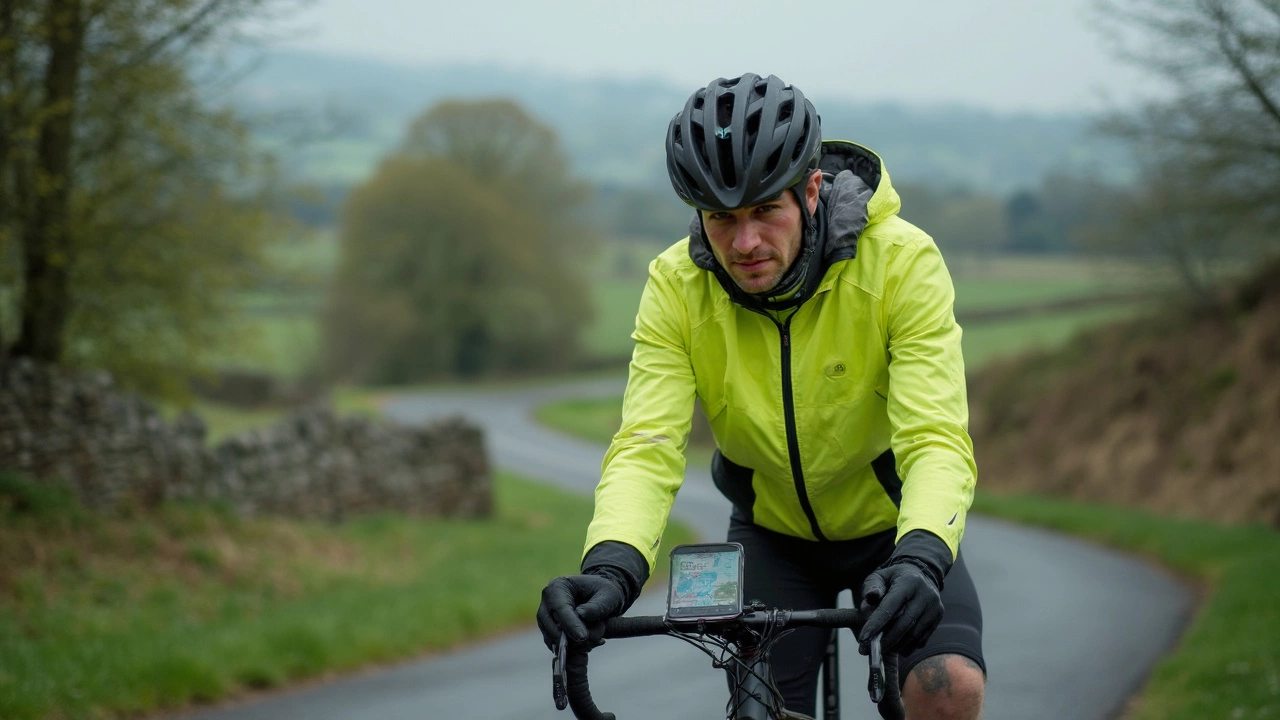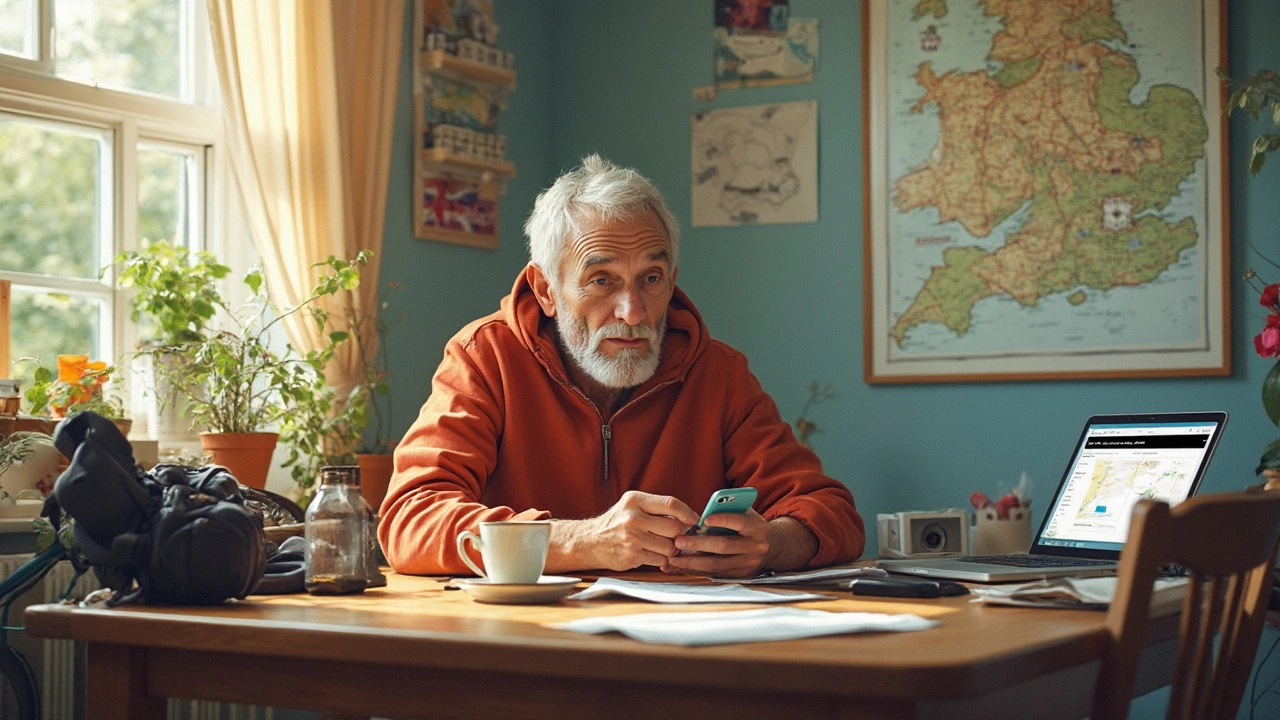Google Maps Offline for Cycling: What Works (and What Doesn't)

Ever lost signal in the middle of a long bike ride and had no idea where you actually were? If so, you’ve probably wondered if Google Maps can save your butt when there’s zero internet. The good news is, offline maps on Google Maps can be a lifesaver, but there are some catches, especially for cyclists.
Straight up—if you just hit “Download” on the area you need before your ride, you can still see the map and your GPS location even without any mobile data. That’s already a big win. The trickier part? If you’re hoping for turn-by-turn bike directions or live route updates based on your speed and road closures, that stuff gets a lot more limited offline. You’ll still be able to pull up your route overview, check selected features like roads and landmarks, and see exactly where you’re rolling thanks to GPS, but don’t expect the full interactive experience you get when you’re online.
- How Offline Maps Actually Work
- Planning and Saving Your Cycling Route
- Limitations and Surprises Offline
- Tips for Cyclists Using Maps Off the Grid
How Offline Maps Actually Work
Before you head out on your bike with no signal, you need to know what Google Maps offline mode really does. When you download an area on Google Maps, your phone saves that map’s data right onto its storage. Your phone doesn’t actually need Wi-Fi or mobile data after that to show you streets and locations.
The magic here is that your phone still gets your GPS cycling location in real-time. GPS works on its own, without using your phone’s internet. So, your blue location dot will keep following you as you ride, even in the middle of nowhere.
What actually gets saved? Here’s what you can count on with offline maps:
- Major and minor roads—including most bike lanes that appear on regular Google Maps
- Neighborhoods, towns, local paths, and street names
- Points of interest, like shops, parks, cafes
- Basic info about certain places—most names, not all details
The maps are static—so you won’t get live traffic, satellite view, or updated construction info. However, navigation for driving, walking, and cycling is available with some big limits. Voice directions and alternative routes don’t always work for cycling; sometimes, you’ll just see your original planned route.
Want a quick look at what’s available and what isn’t with Google Maps downloaded offline?
| Feature | Available Offline |
|---|---|
| View map & GPS location | Yes |
| Start new cycling navigation | Sometimes |
| Voice guidance | No |
| Traffic updates | No |
| Recent place search | Yes |
| New place search | Limited |
Remember, downloaded maps can take up a chunk of your phone’s memory—especially if you’re mapping a big city or a long touring route. Map downloads last for one year if you don’t update them, so it’s smart to refresh before big rides.
Planning and Saving Your Cycling Route
Getting ready to use Google Maps offline for a bike trip starts with a good game plan. You don't want to get halfway up that mountain and realize you’re following the wrong road. The most important step is downloading the area map before you lose signal.
Here’s how you do it in the Google Maps app on your phone:
- Type in your starting point or destination.
- Tap the name or address at the bottom, then tap “Download.”
- Adjust the box to cover the full area you want (make sure you include the entire route plus any detour zones).
- Hit “Download” and wait for it to save.
Saved offline maps aren’t just a picture—they’re interactive. You can zoom in or out, check street and trail names, and even search for some pins like cafes or bike shops inside that square. But remember: if your route stretches across a huge area (like cycling from city to city), you might need to download more than one map tile because Google likes to split them into squares. Each downloaded map covers up to about a 120,000 square kilometer area, which is way more than most daily rides, but worth checking. Saved maps also auto-update every 15 days by default (as long as you connect to Wi-Fi sometimes).
Planning a complex ride? Plot your whole route with waypoints before you go offline, and screenshot the step-by-step directions—Google doesn’t offer offline cycling turn-by-turn navigation yet, even in 2025. If you’re headed somewhere with spotty internet, this combo helps you stay on track without constant data. One last thing: downloadable offline maps do not include every last bike path or hiking trail, especially in rural areas, so check with other apps like Komoot or consult local cycling club resources for the extras.
| Feature | Available Offline? |
|---|---|
| Turn-by-turn Cycling Navigation | No |
| Route Overview & Map Browsing | Yes |
| Nearby Cafe/Bike Shop Search | Yes (if in downloaded area) |
| Live Traffic/Detours | No |
| Map Coverage Size | Up to 120,000 km² per download |
Prepping your phone ahead of time means you won’t be caught guessing, and more importantly, you’ll be able to focus on the ride instead of your screen.

Limitations and Surprises Offline
Lots of folks expect Google Maps to do everything offline, but when you're cycling and lose signal, there’s stuff that just won’t work like you’d hope. The biggest one? No offline biking-specific directions. Once you’re disconnected, you can’t get those tidy turn-by-turn cycling routes that take trails, bike lanes, and elevation into account. If you try to map a new route without internet, Google Maps offline will steer you straight to general car driving routes. And sometimes, those routes dump you onto busy highways or closed roads you’d normally skip.
Also, you lose real-time updates—no traffic info, no accident warnings, and nothing about road closures or construction zones. Your offline map is basically frozen in time, usually whatever the roads looked like when you downloaded the area. If there’s a detour on your path, Google Maps won’t save you.
If you love searching along the way for places to eat, water stops, or bathrooms, you’ll notice offline mode strips a lot of business info out too. A lot of smaller spots, bike shops, and even some trailheads might not show up. No operating hours, reviews, or phone numbers. Basically, what you see is just what was saved when you last updated the map file.
- Google Maps offline only estimates routes for driving, not bikes or walking.
- Watch for outdated roads—offline maps can be weeks old if you haven’t updated them.
- No satellite mode. It’s all plain, basic map view.
- Voice prompts? Forget it. The app won’t announce turns or reroute you based on location in offline mode.
Check out this quick facts table for what works and doesn’t:
| Feature | Works Offline? | Notes |
|---|---|---|
| GPS Location | Yes | Your dot on the map moves; no internet needed. |
| Turn-by-Turn Cycling Navigation | No | Only car driving routes are available without signal. |
| New Route Planning | No | Must plan and save your route while online first. |
| Traffic & Closures | No | No live data or rerouting for delays. |
| Business Info/Reviews | Sometimes | Major businesses might show, most details will be missing. |
| Map Updates | No | Uses data from last offline map download. |
Still, if you just need to see where you are and check your overall route, offline Google Maps can be a lifesaver. Just don’t expect it to figure out that new shortcut trail or warn you about a sudden roadblock. You’ll want to double-check your saved map area and download before you leave WiFi for the best shot at a glitch-free ride.
Tips for Cyclists Using Maps Off the Grid
If you’re planning to trust your phone and Google Maps offline, you’ve gotta set yourself up right. Here are some pro moves cyclists swear by just to make sure their ride doesn’t turn into a wild goose chase.
- Download your map areas in advance. The bigger the area, the safer you are if your ride takes unexpected turns. Don’t just download your main route—include a wide buffer around it.
- Plan out waypoints, not just your start and finish. Save key stops, water sources, or important turns as pins. This makes landmarks easy to spot when route guidance is limited offline.
- Bring a backup battery. Using GPS drains your phone faster than you think. A mid-sized power bank can save the day if your trip runs long.
- Switch on airplane mode to save juice. GPS still works even with mobile data off, but your phone burns less battery this way.
- Double-check your downloaded map before you roll out. Turn off your WiFi/data to make sure everything loads, zoom in on your route, and look for weird blanks or missing segments.
- If you’re heading to an area with tricky terrain or poor signage, screenshots of your planned route can be a last resort, especially if the app fails or crashes.
Let’s get real—offline navigation isn’t perfect. Sometimes even the best plans run into hiccups. In 2023, a survey by the Adventure Cycling Association found that 61% of bike travelers rely on downloaded maps, but about one in three still carry printed directions or a paper map as backup.
| Navigation Type | % of Cyclists |
|---|---|
| Google Maps Offline | 61% |
| Other Mapping Apps | 23% |
| Papermaps/Printed Directions | 34% |
| Dedicated GPS Device | 18% |
One more thing: if you want peace of mind, try combining apps. Komoot and RidewithGPS have robust offline support tailored for cyclists, and sometimes it helps to have a backup like Maps.me. But no matter what, make sure to download your Google Maps offline—it’s the easiest way to make sure you’re never totally lost out there.
